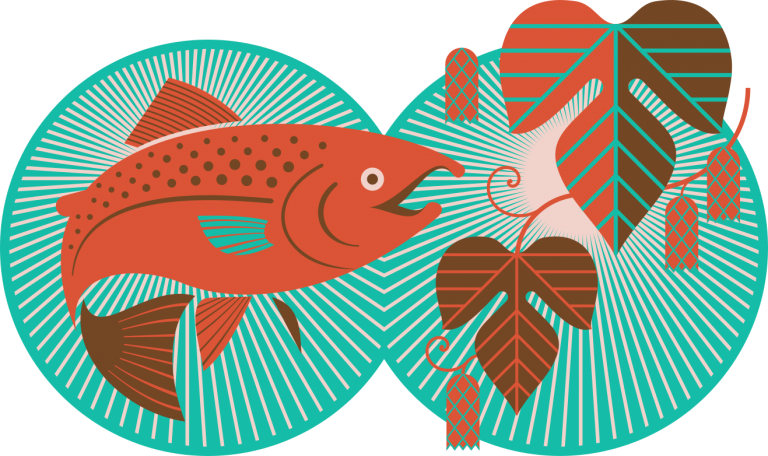Chinook salmon
The Chinook Salmon is the largest of the pacific salmon and is also known as Tyee, King or Spring Salmon. It’s prized by sports fishermen, commercial fishers and Indigenous Peoples. Its flavourful flesh can be either pink or white, based on what the fish has been eating and is high in Omega-3 fatty acids.
It isn’t just people that enjoy Chinook Salmon. While at sea, they feed predators such as Orca’s and Stellar Sea Lions. In the rivers, they feed bears, birds and others. Their carcases feed still more and provide compost and nutrients that support our forests too.
Interesting fact:
Chinook have two distinct body phases: in the ocean, they are silver, with blue-green backs. When they enter rivers to start their spawning migration, they physically morph. There colour darkens to olive brown and re to purple on the back. They develop a distinctive hooked nose, called a kype.

Where it Lives
After spending a year or so in freshwater, these fish head downstream and spend the next year to 8 years in the ocean, before returning to the spawning beds they were born in, to themselves spawn, restarting the cycle. After spawning is complete, they die.
Conservation Concern
Although its designation is controversial, there seems to be agreement that populations are a concern. Chinook Salmon, like all Pacific salmon, are effected by overfishing, pollutants, disease outbreaks and fish escapes from fish farms, warming water and fluctuating water levels related to climate change, hydroelectric projects and agricultural runoffs, to name some.
Sources
- BC Government
- BC Species and Ecosystems Explorer
- Fisheries Canada
- Canadian Wildlife Federation
- Oceana
What you can do
Visit the Spawning Channels, beside Lightfoot Gas and Splitrock, off Hwy 99 between Lillooet and Seton Lake.
Become an Expert
To learn more about Chinook Salmon, click here.





